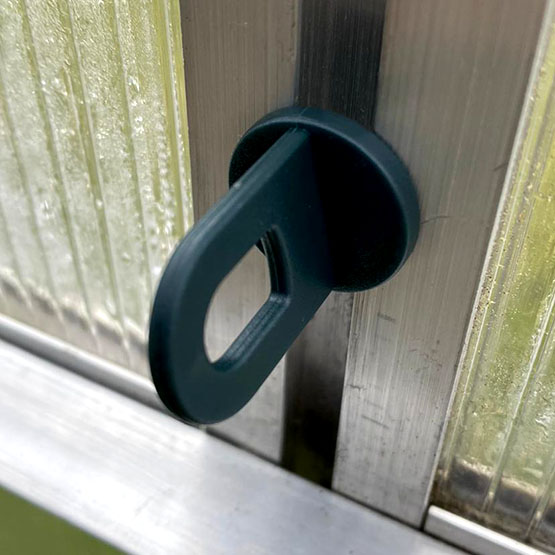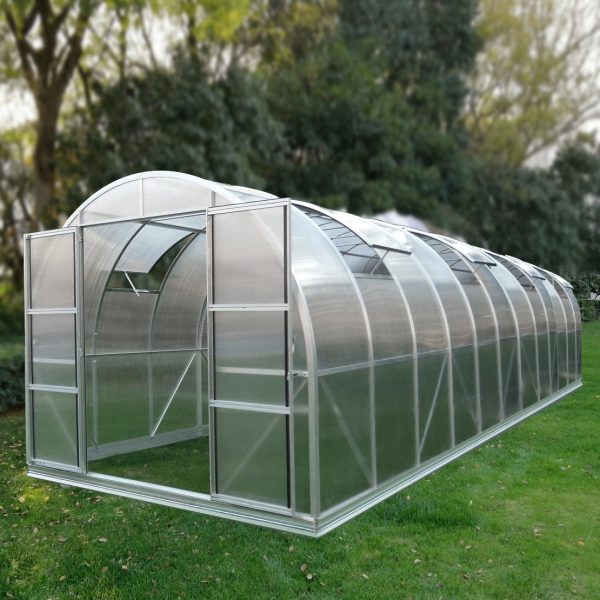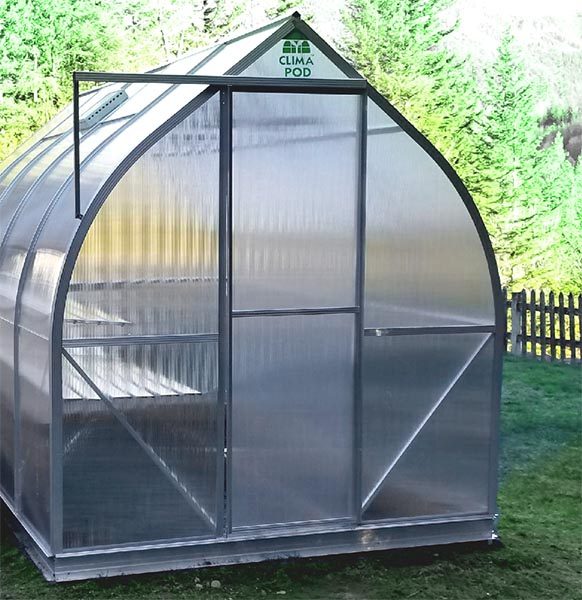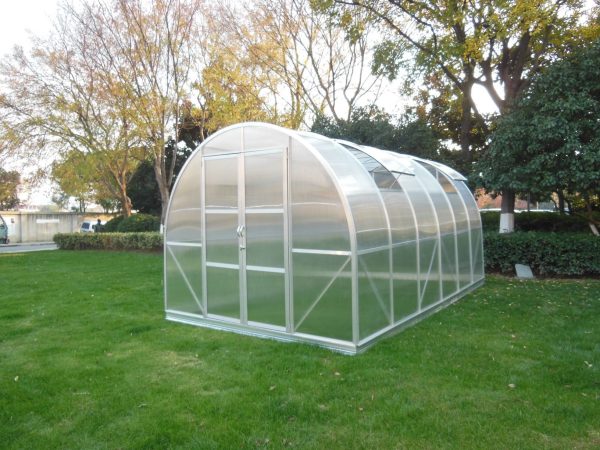Greenhouses made of polycarbonate, glass, films “worked” all summer long so that you get a rich harvest. With the onset of cold weather, it’s time to put it in order. To help you – a detailed greenhouse work in fall calendar with the main stages of work!
Greenhouse care at the end of the summer season includes cleaning, washing the frame and walls, tillage from pests and diseases. But this is not a complete list of what can and should be done in a greenhouse from September to November.
We will consider the care of greenhouses without heating.
Works in the greenhouse in September
The warm September sun still allows you to get a fresh crop of greenery. If you do not plan to sow anything else this season, proceed to the next steps.
1. Sow greens and early ripening varieties of root crops in the greenhouse

Harvest the last crop of vegetables, clear the soil of plant debris, mulch and dig up the beds. Then sow the onion and garlic on the feather, spinach, arugula, rhubarb, dill, parsley, fennel, radish or radish. Water the plantings regularly, thin them out, loosen the soil – and you will grow a new portion of fresh vitamins!
If natural light is still not enough, you can temporarily install phytolight in the greenhouse.
2. Sow green manure in the greenhouse

Siderates will make the soil more loose and nutritious, cleanse it of pests and pathogens. If greenhouse crops have been sick a lot this season, sow mustard, oats, rye or phacelia. You can do this throughout September until the beginning of October, and also in November. If you first want to grow greens, then feel free to sow green manure after harvest.
Works in the greenhouse in October
October is the most productive and busy month in terms of the amount of work in the greenhouse. Some of them can be started as early as September if you plan to close the greenhouse for the winter early.

You better have time to complete the work on preparing the soil for the new growing season before the onset of stable frosts.
1. Remove the beds in the greenhouse in autumn and dig up the soil

Cleaning the greenhouse in the fall should start with cleaning the beds from plants. Harvest the last crop of greens and root crops. Dig up the soil to the depth of a spade bayonet. If siderates were sown, then cut them. By spring, they will overheat and make the soil fertile. Also remove fertilizer bags, used pots, seed containers, etc.
In no case should plant waste from the greenhouse be put into compost, it is better to burn it.
2. Wash the walls and frame of the greenhouse
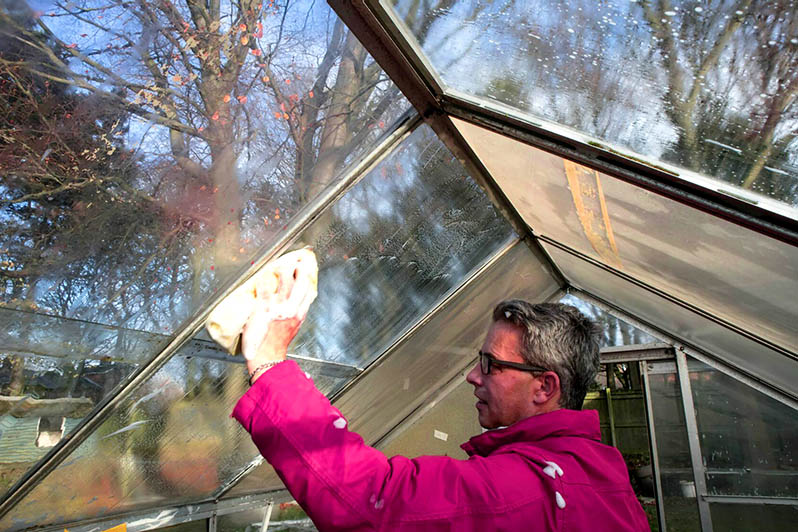
Start processing the greenhouse in autumn by washing the outside and inside. Rub and dissolve a bar of laundry soap in a bucket of hot water, apply to dirty surfaces, wait 5-10 minutes, then rinse thoroughly. You can also use:
- potassium permanganate (3-5 g per 10 liters of water);
- baking soda (2 tablespoons per 10 liters of water);
- mustard powder (2 tablespoons per 10 liters of water);
- a mixture of soap and vinegar (100 g of laundry soap and 1 tsp of vinegar per 10 liters of water);
- 3% hydrogen peroxide solution;
- Oxygen bleaches, diluted according to instructions.
At the film greenhouse, remove the film, wash it, dry it and store it in a dry, dark place. Do not put the roll of film on the end so that its edge does not fray.
Now let’s start processing the greenhouse in the fall from pests and diseases.
So, the greenhouse is clean inside and out. The beds are clean, there is no rubbish lying around. Looks like it’s time to finish the job? Of course not! It’s time to start processing the greenhouse in the fall after harvest. The first stage is disinfection from diseases, the pathogens of which hide not only in the soil, but also on the surfaces of the greenhouse.
It is advisable to repeat the treatment of the greenhouse in the fall against phytophthora and other diseases two weeks after the first procedure or after a period of time specified in the instructions for the drug. You should work at a temperature of at least 10-15°C so that the chemicals do not lose their effectiveness.
A universal disinfectant for treating a greenhouse in autumn is a 3% solution of copper sulfate (300 g per 10 liters of water). They can also treat all the cracks and cracks in the greenhouse, where pests usually hibernate. But do not abuse this tool. Copper-containing drugs are toxic to humans, so they should be used no more than once every 4-5 years.
If during the season you did not observe signs of diseases on the plants, you can treat the greenhouse with some kind of biofungicide for prevention.
Fumigation of a greenhouse with a sulfur checker is popular among gardeners. But this is a rather dangerous method, and besides, we do not recommend you use it in greenhouses with a metal frame, otherwise the metal will begin to break down. Therefore, if you are not confident in your abilities, it is better to choose safer chemical processing methods and do not forget about safety precautions: use personal protective equipment (glasses, gloves, apron, boots, etc.).
4. Treat the greenhouse in autumn against pests
In addition to the disinfection add a disinsection procedure (destruction of harmful insects) to the final treatment. If the plants have been affected by whiteflies, spider mites, aphids, treat the greenhouse with a suitable biological product. To drive away the bear, wireworm and nematode, you can use boiling water. Spill them with soil and cover with a film. After an hour, remove the shelter and treat the soil with an insecticide.
Also, pests will not like the digging that you already did after cleaning the ridges.
How else can you cultivate the land in a greenhouse in the fall with a massive damage to greenhouse plants by pests? We offer the following methods:
- spill the soil in the greenhouse with a dark pink solution of potassium permanganate or a 3% solution of copper sulfate;
- use a formalin solution (250 ml per bucket of water), be sure to ventilate the greenhouse after the procedure.
5. Fertilize your greenhouse in autumn
The soil in greenhouses is depleted in autumn and needs to be improved. Apply 4-5 kg of compost or rotted manure per square meter and carry out a deep digging. But organic matter alone will not be enough, it is advisable to use mineral fertilizers. For each square meter of soil, also add 40-60 g of superphosphate and 25-30 g of potassium sulfate.

Renew the soil in your greenhouse every five years if possible. Take out the old soil outside the site. So you will protect your beds from the spread of phytophthora, powdery mildew, fusarium, root rot, etc. If the plants did not get sick, the soil from the greenhouse can be used to grow, for example, cabbage or carrots, as well as other crops allowed by the rules of crop rotation.
6. Prepare your greenhouse in autumn for tomatoes
Tomatoes do not like acidic soil, so deoxidize if necessary, for example, add 300 g of dolomite flour per 1 sq.m. Choose rye or alfalfa as green manure, after which greenhouse tomatoes feel especially good.
7. Prepare your greenhouse for cucumbers in fall
It is also desirable to deacidify the soil for cucumbers. You can add 200-300 g of lime or 300-350 g of wood ash per 1 sq.m. You can sow almost any green manure you want. The exception is rye, because after it, cucumbers grow worse.
8. Rinse and dry the drip irrigation system
This work can also be carried out in November, but it is better not to wait for severe frosts so that the irrigation system does not fail.
Works in the greenhouse in November
You have almost completely completed the preparation of the greenhouse in the fall for further wintering, there are still a few work left to do that you should not neglect.
1. Ventilate the greenhouse
After disinfection and disinfestation, be sure to ventilate the greenhouse by opening the door and all the windows. And also think about whether you will close the greenhouse for the winter or leave it open.
2. Install supports
The supports will protect the greenhouse from destruction under the weight of snow. Knock together a few timbers in the shape of the letter T, wrap the top of the support with rags and dig in so that the roof of the greenhouse rests on this horizontal bar. The distance between the supports should be no more than 1 m.
If possible, clean the roof of the greenhouse from snow several times during the winter.
3. Repair the greenhouse
Repair or replace any damaged greenhouse elements. Remove rust and paint the metal parts of your greenhouse.Treat cracks with sealant.
4. Sow green manure
Above, we talked about what green manure can be sown in a greenhouse after harvesting. They will come up in the spring. Before flowering, they can be mowed and planted in the soil, preparing the soil for planting seedlings.
Giving attention to the greenhouse now will greatly facilitate your work in the next growing season. And if you are just planning to install a greenhouse on the site, then autumn is a favorable time for this.


